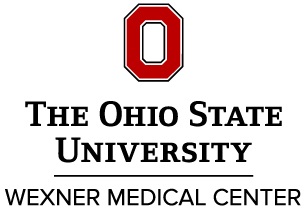The Epilepsy Transition Clinic
The Ohio State Wexner Medical Center has partnered with Nationwide Children’s Hospital to create the Epilepsy Transition Clinic. This project launched in May of 2019 to create a smooth transition between pediatric neurology into adult neurology to ensure that there is no gap in neurological care.
Children with epilepsy represent 3.2% of the estimated 500,000 youth with special medical needs who move from the pediatric to adult care model annually (1). Patients with epilepsy frequently have additional specialized healthcare needs for underlying mental health disorders (like depression) or autism spectrum disorder. Additionally, 42% of children with epilepsy have developmental and/or psychiatric conditions (2-5).
Patients with active epilepsy and inadequate transition of care are also at a higher risk of poor social outcomes. Issues with educational achievement, driving, and employment, all of which are affected by epilepsy, often come to a forefront during this time (6). Youth with epilepsy have lower self-esteem, poorer perception of control, and greater fear that they may be bullied due to their seizures (7). Adult life can prove to be unsatisfactory, as this population has higher rates of unemployment, unplanned pregnancies, and tend to be socially isolated. In a Nova Scotia population-based cohort, 33% of adults with epilepsy were unemployed, 21-48% who were not in a stable relationship became pregnant, and 30-50% lived in poverty (8). Adults that have failed to transition to independence often feel unsatisfied with living at home, and feel socially lonely. Ideally, organized transition of care can anticipate poor social outcomes, and facilitate earlier intervention (9,10).
There is a clear necessity for an organized transition process given the large number of patients, and the substantial support and specialized healthcare requirements of adolescents transitioning to adult healthcare. However, the transition from youth to adult services often does not satisfy published recommendations (11,12).
Based on this need and to help bridge these gaps of care, the Ohio State University Wexner Medical Center (OSUWMC) in partnership with Nationwide Children’s Hospital (NCH) started the Epilepsy Transition Clinic. Adolescents and young adults are given regular surveys to assess their readiness of transitioning care. Once it is felt that he/she is ready to transition care to the adult side, a referral is placed for this clinic. An adult Epileptologist from OSU then sees each person in clinic at NCH to ensure that there is a smooth transition between hospital systems. Support services such as Genetics, Pharmacy, and Social Work are present during this clinic to help assist with recommendations. At the end of the visit at NCH, each person is given a follow-up visit at OSU to ensure that they officially established with the adult epilepsy provider.
It is our hope that transitioning care in this manner increases trust and peace of mind in this scary, but essential process.
About the Author:
Sarita Maturu, DO is an Epileptologist at Ohio State Wexner Medical Center in Columbus OH.
Dr. Maturu became interested in Epilepsy quite early on in her training. She has a special interest in treating women with epilepsy and a passion towards improving quality of life in this specific patient population. In partnership with the Maternal Fetal Medicine department, she has developed the Epilepsy and High Risk OB Clinic where she manages women that have epilepsy and are pregnant. She has also helped develop the Epilepsy Transition Clinic that partners with Nationwide Children’s Hospital to provide more personalized care through this time.
References:
2. Nabbout R, Andrade DM, Bahi-Buisson N, et al. Outcome of childhood-onset epilepsy from adolescence to adulthood: Transition issues. Epilepsy Behav. 04 2017;69:161-169. doi:10.
3. Sillanpää M. Epilepsy in children: prevalence, disability, and handicap. Epilepsia. 1992 May-Jun 1992;33(3):444-9. doi:10.1111/j.1528-1157.1992.
4. Camfield C, Camfield P, Smith B, Gordon K, Dooley J. Biologic factors as predictors of social outcome of epilepsy in intellectually normal children: a population-based study. J Pediatr. Jun 1993;122(6):869-73. doi:10.1016/s0022-3476(09)
5. Oostrom KJ, Schouten A, Kruitwagen CL, Peters AC, Jennekens-Schinkel A, Childhood DSGoEi. Behavioral problems in children with newly diagnosed idiopathic or cryptogenic epilepsy attending normal schools are in majority not persistent. Epilepsia. Jan 2003;44(1):97-106. doi:10.1046/j.1528-1157.2003.
6. Khan A, Baheerathan A, Hussain N, Whitehouse W. Transition of children with epilepsies to adult care. Acta Paediatr. Mar 2013;102(3):216-21. doi:10.1111/apa.12097
7. Matthews WS, Barabas G, Ferrari M. Emotional concomitants of childhood epilepsy. Epilepsia. Dec 1982;23(6):671-81. doi:10.1111/j.1528-1157.1982.
8. Camfield C, Camfield P, Gordon K, Smith B, Dooley J. Outcome of childhood epilepsy: a population-based study with a simple predictive scoring system for those treated with medication. J Pediatr. Jun 1993;122(6):861-8. doi:10.1016/s0022-3476(09)
9. Camfield PR, Camfield CS. What happens to children with epilepsy when they become adults? Some facts and opinions. Pediatr Neurol. Jul 2014;51(1):17-23. doi:10.1016/
10. Geerlings RPJ, Gottmer-Welschen LMC, Mac
11. Toomey SL, Chien AT, Elliott MN, Ratner J, Schuster MA. Disparities in unmet need for care coordination: the national survey of children’s health. Pediatrics. Feb 2013;131(2):217-24. doi:10.1542/peds.2012-1535
12. Kenney MK, Mann M. Assessing Systems of Care for US Children with Epilepsy/Seizure Disorder. Epilepsy Res Treat. 2013;2013:825824. doi:10.1155/2013/825824



